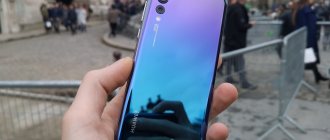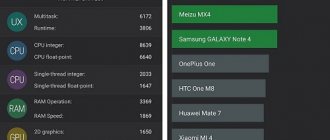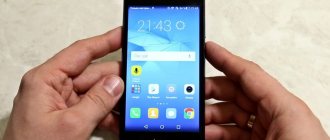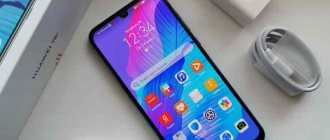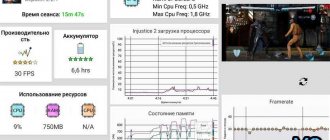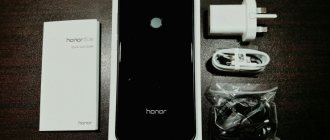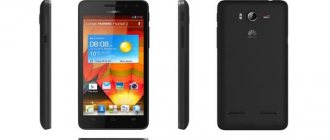Specifications (VTR-L09)
- Display: 5.1″ (64 x 113 mm), IPS, capacitive multi-touch, AMOLED display with Full HD resolution (1920x1080), 2.5D protective glass Corning Gorilla Glass 5, 432 ppi
- Operating system: Android 7.0 Nougat with EMUI 5.1 shell (+ interface adjusts to the color of the device)
- Processor: Kirin 960 (1.8 GHz clock speed, 4x ARM Cortex-A53 @ 1844 MHz, 4x ARM Cortex-A73 @ 2362 MHz)
- Video processor: Mali G71 MP8
- RAM: 4 GB
- Internal memory: 64 GB
- Memory card: microSD (card capacity up to 256 GB) - instead of the second Sim
- SIM: 2 Nano-SIM (alternate operation) or 1 Nano-Sim + microSD
- Main camera: Leica Dual Camera 2.0 (3968 x 2976) - 12 MP (color) + 20 MP (monochrome) sensors with f/1.8 | f2.2, 3.95mm focal length, phase-detection hybrid autofocus, optical image stabilization, 2X hybrid zoom, PDAF, dual-LED flash, 4K video recording
- Front camera: Leica 8 MP (3264 x 2448), F/1.9, focal length 3.36 mm
- Audio: Yamaha and Harman Kardon audio system, 24-bit/192kHz audio, XviD/MP4/H.265 player, MP3/eAAC+/WAV/Flac player, active noise reduction system, dedicated microphone + stereo headset
- Communication: GSM, 4G LTE Cat. 13/12, NFC, Wi-Fi 802.11 a/b/g/n/ac, Wi-Fi Direct, hotspot, 2×2 MIMO, Bluetooth 4.2 WiFi 802.11ad - so-called. WiGig,
- Navigation: GPS, A-GPS, GLONASS, BDS, GALILEO, Huawei Geo Technology
- Ports: micro-USB Type-C, mini-jack 3.5 mm
- Sensors: light sensor, proximity sensor, accelerometer, compass
- Other functions: voice dialing, voice control, airplane mode, flashlight
- Fingerprint scanner: front sensor + multifunctional Home button
- Battery: 3,200 mAh (non-removable, lithium polymer, Huawei SuperCharge)
- Dimensions: 145.3 x 69.3 x 6.98 mm
- Weight: 145 g
- Case materials: metal, glass
- Color: Pantone-designed Greenery, Royal Blue, Gold, Silver, Graphite Black + China-exclusive Pink and Ceramic White
- Contents: smartphone, USB cable – micro-USB Type-C 1.0, AC adapter (5V – 2A / 4.5V – 5A / 5V – 4.5A), wired headset, plastic bumper case, instruction manual
- Price at the time of testing: from 649 €
- Announcement: February 2021
Battery life and performance
The single-chip Kirin 960 system is responsible for the performance of this smartphone. This is an eight-core processor made according to the Big/Little layout. The productive processor cluster is equipped with four A-73 cores with a clock frequency of 2.4 GHz, and the energy-efficient cluster has four A-53 cores with a clock frequency of 1.8 GHz on board. The eight-headed Mali-G71 video core is responsible for the graphics component in the processor.
Kirin 960 is a very productive and quite economical processor that ensures comfortable smartphone operation both in Internet surfing and under heavy loads in modern games and other tasks that require high multi-threaded performance. If we compare it with other single-chip systems, the closest thing to it can be called the processor from the Kvalkom company - Snapdragon 821, with which Kirin fights almost on an equal footing. However, despite all the efforts of Huawei engineers, their brainchild cannot yet keep up with such new products as the Snapdragon 835 or Exynos 8895.
For clarity, we provide you with a summary table of processor testing in the AnTuTu and GeekBench benchmarks.
| Benchmark | Huawei P10 Plus (HiSilicon Kirin 960) | Sony Xperia XZ Premium (Qualcomm Snapdragon 835) | LG G6 (Qualcomm Snapdragon 821) | Meizu Pro 6 Plus (Samsung Exynos 8890 Octa) | Samsung Galaxy S8+ (Samsung Exynos 8895 Octa) |
| AnTuTu (v6.x) | 125 962 | 165 722 | 138 718 | 113 351 | 172 891 |
| GeekBench (v4.x) | 1849/4670 | 1900/5816 | 1741/4221 | 1482/3836 | 2008/6433 |
As for the graphics part, the Mali-G71 video accelerator copes quite well with most modern heavy games. For example, in the most popular online game today, World of Tanks: Blitz, the smartphone showed approximately 45 to 50 frames per second at high settings and a screen resolution of 2560 × 1440, which is a very decent result. Also in games where it was necessary to use the device's orientation sensors, for example in the game Real Racing, the P10 demonstrated high clarity and confident motion recognition.
During the Huawei P10 Plus battery life test, we received the following results. When using the auto-brightness settings and turning off the energy-saving functions, it was possible to bring the phone to zero: in reading mode - in 11 hours 30 minutes, in video mode - in 9 hours 30 minutes, in gaming mode - in 3 hours 30 minutes.
To be honest, the results were expected to be somewhat better, but it is what it is. Still, a 5.5-inch QHD screen requires quite a lot of energy, and the battery of the P10 Plus is not the largest, only 3750 milliamp hours. We hope that Huawei will correct this situation in future flagships.
Equipment
Huawei P10 is packaged in a small cardboard box: white, minimalistic design, laconic inscriptions with a bright red accent.
It opens in a rather original way: the doors slide apart - inside there is a phone in the tray, under it there is a folder with documents, a paper clip and a bumper, below there are 2 boxes with a headset and a charger. Initially, the doors were fastened with a sticker; a trace remained from it. The manufacturer immediately applied a protective film to the screen.
Autonomy and charging
The device has a 3200 mAh non-removable battery with support for fast charging. Since there were no original chargers included, it was not possible to test the technology.
According to the company, the flagship should last for two days. If you use your smartphone rarely and do not load it with energy-intensive tasks, then it is quite possible. If you offer the device the Internet, a browser, instant messengers and other applications, then it will last for a day. This is a familiar indicator - under load, not a single flagship will last two days. The main thing is that Huawei P10 will not run out of charge in the middle of the day.
Appearance
For review, we received the most modest color option from Pantone - graphite black. The younger model has compact dimensions: width - about 14.5 by 7 cm, thickness - almost 7 mm. The creators of the new flagship abandoned their signature sharp corners and most shiny elements - the new P10 acquired soft edges, relying on a monochromatic palette. At the same time, the device lost its individuality and began to resemble the iPhone 7.
On the black matte cover with a discreet logo on top there is a glossy strip: on the left there is the same camera with a dual LED flash. Under the latter there is a laser sensor invisible to the eye. On the right is the LEICA logo and the name of the module SUMMARIT-H 1:2:2/27 ASPH. Below is faded white information about the manufacturer and model code. Hidden antennas with dark colors are practically indistinguishable.
The P10 is a so-called “frameless” one with a 5.1″ display (6.4 by 11.3 cm), although the screen has a thin black edge. The front panel is covered with protective 2.5D glass. In the center of the one and a half centimeter “platform” above the screen there is a speaker. To the left are light and proximity sensors, a front camera and an LED indicator (flashes green and blue when charging and indicating new notifications). Below the screen there is an oblong control button, about a millimeter “recessed” into the surface, combined with a fingerprint sensor.
On the left edge there is a tray for a SIM card / memory card. On the right is a volume slider and a ribbed power button, accented with a red frame. On the top edge there is a neat microphone point. On the bottom: in the center is a micro-USB Type-C port, on the left is a microphone and a classic 3.5 mm headphone jack, on the right is an external speaker.
The elegant Huawei P10 with rounded sides fits well in the hand - the convenient screen diagonal allows you to easily operate the device with one hand. The amazing lightness of the metal smartphone is striking - it feels almost weightless. The only negative: the phone is very thin, smooth and constantly tries to slip out of your hand like a fish.
To handle it more confidently, we strongly recommend wearing a case. The kit, for example, already has a plastic bumper - quite nice, transparent with a matte corrugated surface. In its basic “clothes” the device looks quite organic, although it becomes somewhat rougher and thicker.
Sound quality
There is only one external speaker, located to the right of the USB Type-C port. The playback quality through it is quite decent. It is moderately loud - above average, but most importantly it does not rattle or whistle at turned up volume. There are speakers with better sound quality and in significantly cheaper devices, but still.
The sound in the headphones is simply wonderful. Better than what is now considered the average standard among modern smartphones. With DTS enabled, the immersion becomes a little deeper and the soundstage a little richer.
I compared the performance of our hero with OnePlus 3T, which also did not fall from the sky. So, after P10, the sound on 1+3T is somewhat poor, a little flat - not that good, in general.
The built-in player is beautiful, but not very functional. No, of course, it can cleverly sort music into different tags and categories, and turn off using a timer, but there are no sound settings here. There is only the ability to turn on/off an enhancement called DTS.
If you turn the smartphone in a horizontal orientation, the player opens an interface that is very similar to the feature Apple killed some time ago called Cover Flow. It was a good idea and the guys from Huawei were great for picking it up.
Display
Compared to its predecessor P9, the new P10 has a screen with a smaller, but more convenient diagonal of 5.1 inches (64 by 113 mm). The display meets modern flagship standards: IPS, Full HD resolution, the latest 2.5D protective glass. Corning Gorilla Glass 5 can withstand a fall from the so-called “selfie height” - approximately 160 cm. Huawei did not set itself the task, like Samsung, of completely getting rid of the frame: there is a thin black “side”, but it does not hurt the eye.
The display supports 10 simultaneous touches; the smartphone is pleasant and easy to operate; it perfectly reads and interprets presses of varying strengths thanks to the new interface. The screen pleases with rich colors (432 ppi), and the brightness is more than enough for comfortable work in bright sunlight. True, the protective film of the screen noticeably glares: whether to leave it or not is at the discretion of the owner.
The eye does not register color distortions when turning in everyday use. The settings have a fairly simple and, at the same time, functional interface for individual screen settings: from design to radiation parameters. In the menu you can not only select the font size and wallpaper from the gallery, from standard options or from the manufacturer, but also set the degree of blur and the presence/absence of background scrolling.
You can confidently trust the “Auto Brightness” function - the smartphone effectively and quickly adapts to the environment. The traditional “Eye Protection Mode”, which reduces the level of UV radiation (for reading texts, for example), is installed if necessary according to a schedule. You can choose a comfortable color temperature not only from the three standard ones, but also set it according to the color wheel.
Interface and fingerprint scanner
EMUI 5.1 based on Android Nougat is an excellent shell with a lot of features and interesting things. Once again, there is no point in describing it; everything you need is in the review of P10 Lite and Honor 8.
Screenshots for clarity:
Cameras
The main pride of the device is the camera, developed jointly with the legendary Leica, one of the most reputable manufacturers of photographic equipment.
In fact, Huawei was at the origins of the dual camera craze. And it would not be an exaggeration to note that the Chinese company can be considered the best in this niche. Since last year's debutant Huawei P9 (main - 12 + 12 MP, f/2.2; front - 8 MP f/2.4), the manufacturer has gained experience and has already released a new generation camera - Lecia Dual Camera 2.0 . (The Mate 9 phablet, which we talked about earlier, also received the same module.) For smartphones, Leika makes expensive aspherical lenses, which are traditionally installed in camera lenses.
Above the frame window there is a line with basic settings: “Flash”, “Selfie Effects”, “Film” (regular, faded or bright), “Filters”, changing the camera and, of course, “Wide Aperture Mode” - the main feature of the system two sensors, which is responsible for simulating the aperture or, more simply, “faking” bokeh. The depth of field is set automatically, but can also be adjusted manually (from f/0.95 to f/16) by clicking on the icon with the working f value that appears in the lower right corner. In addition, 2 cameras allow you to fearlessly use the zoom without fear of getting a noisy, unclear image.
At the bottom there is a “curtain” of the PRO mode - you pull it up and configure the phone’s camera like a professional device: selecting focus, ISO (up to 3,200), shutter speed (from 30 seconds), white balance (with Kelvin scale) and exposure compensation. When switching to this mode, the user automatically gains access to the expanded “Settings” menu (swipe from right to left), where you can even choose to shoot in RAW for subsequent professional processing.
Swiping from left to right opens the “Modes” menu, where the user can expect a wide selection of additional functions - from HDR and B&W to “Tasty Food” and “Panorama”, from “Night Shot” to a scanner and Slow-Mo.
In automatic mode, the camera works flawlessly in 99% of cases: it perfectly adapts to any lighting conditions, producing clear and rich images. Focus is fast and accurate even at the shortest possible distance. The dual LED flash provides soft diffused light and does not turn the picture into an unnatural blue.
It’s difficult to distinguish shots taken on the P10 from professional photos, especially on Instagram. So let's just admire our Spanish photos...P10 Adventures in Barcelona
The front camera from Leica with a resolution of 8 megapixels and F / 1.9 is similar in interface to the main one, except that there are fewer functions: the absence of a wide aperture mode is compensated for by the portrait mode - “Decoration”, pleasantly blurring the backdrop and delicately masking imperfections of the facial skin. It works not only when shooting photos, but also videos. Those who like to click in front of landmarks will appreciate the selfie panorama function. The device is compatible with monopods from other manufacturers - no additional software installation is required. In the settings there is an interesting “Perfect Selfie” item, which allows you to refine the photo in several parameters: “Smoothing”, “Whitening”, “Big eyes”, “Bright eyes” and “Narrow face”. This set is explained by purely Asian ideas about beauty: smooth light skin, large expressive eyes and a “heart” face. I wonder if Huawei is aware of Western women’s tender love for tanning?..The P10 can also be proud of its video quality: the main camera records in 4K, and the front camera records in HD. The sound quality is not satisfactory.
Huawei P10 Cameras
Huawei P10 camera review shows that it is one of the best in its price category, and indeed in the mobile market in general. Good results were achieved thanks to the involvement of the German brand Leica, which has been producing professional photographic equipment for almost a century. The manufacturer did not lag behind the trends and installed a double camera module - one sensor with a resolution of 12 megapixels and a color sensor, and the second - a monochrome 20 megapixels sensor. A complex laser algorithm is used to focus, providing instant targeting of the subject. In addition, phase and depth autofocus are used.
Camera interface
Huawei P10 lite camera review showed that the presence of a dual module significantly expands the shooting capabilities. Thus, photographs with an expanded aperture become available, which allows you to get a beautiful blurred background effect. There is optical stabilization and 2x zoom without loss of quality.
As the Huawei P10 lite 32gb ram 3gb review shows, when shooting in dark conditions, you can get good pictures thanks to the high-quality work of the dual-section flash. But detail becomes noticeably worse, and noise appears. To reduce them, you can “play around” with manual settings and shoot at an increased shutter speed.
Example photo
Huawei P10 lite black review in Russian introduces us to the 8 MP front camera. It is equipped with autofocus, and the quality of the pictures is perhaps superior to all competitors from the Middle Kingdom. There is the possibility of software facial enhancement, when minor imperfections are removed and skin tone is corrected. When shooting in manual mode, you can set your own parameters for shutter speed, exposure, and much more.
Our Huawei P10 64gb ram 4gb review showed that the smartphone records video in 4k and FullHD at a frequency of 60 frames per second. If you need a real camera phone, but for one reason or another you are not considering an iPhone 7 or Samsung Galaxy S8, then this is the ideal choice.
OS and interface
The new P10 and P10 Plus from Huawei received the latest version of Android 7.0 with the latest proprietary shell EMUI 5.1 .
The developers decided to get serious about improving the process of RAM management, screen responsiveness and photo processing in the background. It would take a long time to describe all the intricacies of communicating with the new OS, so it’s worth concentrating on the main thing. EMUI 5.1 uses a new Ultra Memory algorithm to free up RAM faster. Moreover, it monitors user behavior to launch the most frequently used applications faster. The system constantly looks for background energy-consuming applications and strongly advises you to close them. It feels like Kuzya the brownie has taken up residence on the phone and is wailing: “Oh, trouble, trouble, ruin! Inventories have not been measured, losses have not been counted..."
Ultra Response technology with a new driver helps the smartphone respond to touches even faster. Moreover, the screens of new smartphones from Huawei now support predictive tracking of the user's fingers. The developers even thought through such details as the problem of accidental unlocking of the smartphone: they processed more than 65 of the most frequently used gestures and scenarios to avoid its occurrence as much as possible.
While the phone is in standby mode, the Highlights function is working hard in the “Gallery”, diligently indexing the owner’s photos by places and people. They also promise that she will create a video of the best moments. Unfortunately, I haven’t been able to see this with my own eyes yet.Judging by first impressions, the EMUI shell seems more thoughtful in many details than standard Android 7.0, although it also takes some getting used to. The new shell strives to adapt as much as possible to the individual needs of the user - the possibilities for customization are simply enormous. You just need to spend time getting to the bottom of all the subtleties.
The usual curtain, which comes out when you swipe from top to bottom (with one finger - partially, with two - completely) has enriched its range and, most importantly, allows you to arrange icons to your liking. “Long Screenshot”, “Screen Recording”, “Eye Protection”, Broadcasting (via Mirror Share) and some others appeared on the list. It is now possible to monitor the charge level of connected wireless devices in the status bar. Now notifications are no longer divided into two tabs, but are shown across the entire width of the screen. The interface immediately offers to respond to messages that pop up here. You can view active applications simply by lightly swiping horizontally on the multifunction button.
With each new version of the OS, the contents of the Settings menu become wider and more meticulous in nuances that no one had even thought about before. Choose a regular screen style or with a separate “Apps Screen”, customize the radiation, color temperature, image, theme, background. If there are not enough standard options, look among the endless options of the Themes application from Huawei. Further more - choose the proportions and methods of scrolling desktops...
It is worth noting that the EMUI developers have moved away from their traditional minimalism in design: all the standard options are somehow overly tricky and sophisticated. Finding something simple, concise and comfortable has become difficult.
You can be stuck in “Control” for a long time: there is an additional button, a whole set of various control gestures, special modes for a case, working with gloves, and one-handed control. Here you can select the “smart” mode for a standard headset. A separate item in the menu teaches you how to use the multifunction sensor, and also allows you to install regular on-screen buttons. The display now shows a pedometer in standard mode.
In the “Management” menu, you can register your Huawei account, which will give you access to improved service and protection. There is no mess of pre-installed applications on the desktop - only the essentials: basic programs from Google and several proprietary ones from Huawei.
Of particular note are the convenient “Phone Manager” (comprehensively optimizes the operation of the device), the HiGame toy service, the “Health” fitness application and the HiCare service center. The only thing that confuses us about the latter is the absence of Russia in the list of countries where the program operates.
The new Android 7.0 Nougat is currently available on less than 5% of devices, so many application developers have not yet had time to adapt programs for it. Some applications are buggy or refuse to work at all, especially not very popular ones. Several of our standard system tests failed on this phone.Software platform
Huawei P10 Plus is equipped with the Android operating system version 7.0 and the proprietary EMUI 5.1 shell. EMUI 5.1 supports dual-window mode, various gestures, virtual buttons, and many other small, but no less pleasant features. Among the installed applications you can find a file manager, a health tracking program and a comprehensive phone manager. Third-party applications include Yandex services, Opera browser and Booking.com.
Also, in this version of the shell, Huawei programmers made sure that the owner of the smartphone would be as comfortable as possible in using it. So, when you launch certain programs every day at a certain time of day, EMUI will be able to understand the owner’s preferences and in the future will promptly load the necessary data into RAM even before you use it. This means nothing less than that over time you will notice how your favorite programs launch much faster, which means that your work with your smartphone becomes much more enjoyable.
Not so long ago, namely on the tenth of January this year, Huawei launched beta testing of Huawei P10 Plus with an updated version of Android 8.0 and a new EMUI shell for the Russian market. If the testing is successful, then at the end of February all owners of these phones will receive an update to their device to the latest version of the Android operating system.
Fingerprint sensor
This time, Huawei decided to take an example from Meizu and install a fingerprint scanner on the front panel, and the haptic feedback function allowed it to be combined with a control button.
More precisely, it’s difficult to call this sensor a button—it’s more like a control “hole.” At first, “pressing” this oval depression under the screen is somewhat strange - without the usual tactile sensations. But then you get used to it. The fingerprint sensor reacts with lightning speed: raise your finger and the display lights up. Light press - back, strong (until vibration) - home, swipe - list of open applications. The sensor can be responsible not only for unlocking the entire device, but also selectively protect individual applications from attacks by strangers.
Design and ergonomics
Huawei P10 comes in several colors: black, pink, champagne, mint and white. We are reviewing the black version of the device, the most strict and serious of all, an excellent option for any audience.
Many users who are interested in smartphones often complain about the very similar and monotonous design of gadgets. It’s difficult to argue with this, because the front panels of Huawei P10, OnePlus 3/3T and Meizu U10/U20 are almost impossible to distinguish from a distance of a meter.
The fingerprint scanner is not visually surprising - the usual rectangular rounded button, however, it is not pressable. Huawei P10 offers users two options:
- On-screen touch navigation buttons, as in many of the company's smartphones, and a fingerprint scanner on the front panel (works only as a scanner).
- Using the fingerprint scanner as a navigation button, following the example of Meizu and mTouch 2.0: touch the scanner - back, long press - home, swipe from left to right - active applications.
We have never seen such a solution before, but here it left a pleasant impression. EMUI again distinguished itself in a good sense of the word.
Above the display there is an earpiece and a noticeable front camera eye. In the black color of the smartphone, proximity and light sensors are not visible.
The black back panel looks strict. At the top there is a glass insert on which the dual camera modules, flash and Leica logo are located. As everyone knows, the German company cooperates with Huawei and helps it create high-end cameras. This is the official version.
A little lower in the center is the manufacturer’s logo, at the very bottom are the trademarks.
The antenna strip, rounded at the corners and located at the bottom, is almost invisible in the black color of the gadget. Its shape resembles the stripes on the iPhone 7.
The physical buttons are located on the right side, everything is standard, except for the ribbed power button with a pink outline. Quite a controversial decision.
On the left side, in the usual place, there is a slot for SIM cards and a memory card, which can be removed with a special clip.
The noise-canceling microphone hole is barely visible on the top edge.
The bottom edge of the smartphone houses many elements: a USB Type-C connector, a microphone hole, perforations for the main speaker and a 3.5 mm headphone jack. This location is quite convenient.
As for tactile sensations, it’s pleasant to use the Huawei P10; after all, you’re holding a flagship for 36 thousand rubles. The side edges are rounded, the metal itself, although matte, is quite slippery, you need to be careful here. It is important to note that the case materials are non-staining and the smartphone does not readily get dirty.
The diagonal of the display and the dimensions of the device are comfortable even for using it with one hand; the thickness of the case is only 6.98 mm, weight: 145 grams. The build quality is at the highest level - the smartphone is solid and durable, there can be no talk of any squeaks.
Iron
The P10 is equipped with a 14nm HiSilicon Kirin 960 processor, independently developed by Huawei, a Mali G71 MP8 video chip and 4 GB of RAM.
Internal storage capacity is 64 GB (with a maximum possible expansion of 256 GB via microSD). Alas, the new flagship still did not receive the Kirin 970, but a slight increase in performance is still observed here: compared to the same processor used in last year’s Mate 9, the Cortex-A73 cores began to run 0.1 GHz faster.
Purely outwardly, the P10 does not look like a gaming device with its elegant forms and small screen, but if necessary, it can adequately handle resource-intensive toys. He reacted calmly to a couple of dozen simultaneously running applications of varying degrees of severity. The results of the most popular Antutu benchmark are decent. (We tried out the “long screenshot” for the occasion.)
Testing the system for strength, we launched one of the heaviest mobile toys, Asphalt 8, on top of those twenty background applications. It ran without problems, but we couldn’t play for a long time - very soon the phone began to hint that it was preparing to burn the “tormentor’s” hands.
P10 completed the race with dignity and only then allowed himself to hang. Even when all applications were closed and processes were optimized, the “glitch” did not disappear - the phone stopped opening the “Gallery”. It returned to normal only after the second reboot... When it finally cooled down. The experimentally determined critical temperature of “dullness” is from 71°C.
The prospective owner of a smartphone equipped with one of the best mobile cameras will most likely give preference to graphic applications and social networks, and for this purpose the device has more than enough data. However, we haven’t forgotten about augmented reality lovers and launched Pokemon Go, which in our opinion is the game that is most adequate to the “abilities” of a smartphone.
We put the new OS Screen Recording feature to good use, and now you can admire how the P10 passes one of the most spectacular graphics tests - Epic Citadel.Performance and benchmarks
The Huawei P10 is equipped with a proprietary Kirin 960 chipset, a Mali-G71 video accelerator, 4 GB of RAM and 64 GB of flash memory. These specifications are completely identical to the Huawei Mate 9 phablet, which we reviewed in February.
In general, the feeling of speed and smooth operation of the two smartphones is the same. The Huawei P10 has a very fast and responsive interface, excellent scrolling behavior in browsers and stable performance in multitasking mode.
The smartphone is also strong in games - Apshalt 8, Dead Trigger 2 and Godfire run without any slowdowns, FPS does not drop, at least it was not noticeable to us. But one drawback was still observed - in heavy games the smartphone got very hot and quickly, which was not observed on the Mate 9. Most likely, this is a software problem that we encountered on the test sample.
The benchmark results are almost identical to the Mate 9's numbers.
Connection
The P10 smartphone supports the latest 4G LTE Cat.
13/12 (Cat.13 - 391.6/150 Mbit/s. Cat.12 - 603/100 Mbit/s), which provides the current maximum data transfer speed and, accordingly, establishes a higher quality voice connection using VoLTE technology. The simultaneous use of two Sims, which has already become common, is impossible on the younger VTR-L09 model (“SD Only,” warns the inscription on the tray). The older VTR-L29 (P10 Plus) already allows you to use the tray for two cards at once, but there you have to choose between additional memory and additional communication.
The set includes a flagship set of Wi-Fi standards, Bluetooth version 4.2 and, of course, an NFC chip that ensures secure wireless data transfer at a distance of no more than 10 cm. It is this that makes it possible to pay for purchases directly with a smartphone through a special service. A useful and promising thing.
Wi-Fi+ has appeared in the P10 settings - the so-called “Smart Internet Access”, which constantly monitors the quality of the connection and decides which network is more convenient to connect to. In the mobile data settings, you can not only find traffic statistics, but also enable a special traffic saving function, prohibiting your smartphone from “running riot” outside of Wi-Fi.
This smartphone also has a proprietary Huawei Share function, which allows you to quickly and easily transfer data from one Huawei device to another. A kind of “separate area” for our own people.It turned out to be convenient to use navigation with the P10 - its error in determining the location is minimal, so you don’t have to wait long for the GPS to “blank up”.
Communication and Internet
Huawei P10 supports work in all Russian LTE networks. Data transfer occurs at a very fast speed. To optimize this process, you can use Wi-Fi+ mode. It combines traffic from LTE and Wi-Fi. There is a Bluetooth interface.
GPS, GLONASS, Galileo and Beidou satellite systems are used for navigation. The device finds the desired satellite in about 15-20 seconds on a cold start.
Sound
Huawei reasonably decided that the development of sound for its flagship, as in the case of a camera from Leica, should also be left to professionals: the “voice” of the P10 was provided by such Hi-End brands as Yamaha and Harman Kardon.
The smartphone sounds good and loud, at maximum it does not wheeze or distort the sound. It also records quite cleanly: the system does not pick up extraneous noise, which was especially well demonstrated by filming a video at a rock concert.
The set also includes its own headset: headphones of an unusual design look somewhat bulky after the usual vacuum ones, but they stay in the ears well and sound decent.
In the settings menu, all items relate only to signals, but there are no separate sound modes or equalizer. Like, the gods of the industry set it up, so mere mortals shouldn’t interfere.
The Music application is preinstalled on the desktop - Huawei's own audio player with a user-friendly interface.
Leica cameras and photography
It's time to talk about the most interesting feature of the smartphone - the dual camera. Huawei has made an excellent marketing move; cooperation with the famous German company Leica has definitely borne fruit.
The Huawei P10 camera consists of two sensors: a 12 MP RGB sensor and a 20 MP monochrome sensor. The focal length of both is 27 mm, aperture: f/2.2. Depth, phase and laser autofocus, dual LED flash and, of course, an optical stabilization system are involved in creating images. The set is impressive, let's look at some sample photos.
During the day, the pictures are perfect: detailed, clear and with correct color rendition.
The dual camera also delivers excellent results in artificial light.
Shooting with flash turns out well, there are no flares or color changes, everything is clear and beautiful.
Macro photography is excellent; photographs can almost compete with those taken on budget DSLRs.
In low light, the camera works clearly, preventing the appearance of noticeable noise. Of course, they sometimes appear, but they can only be seen when the picture is zoomed in.
Selfies on the smartphone are taken by an excellent 8 MP camera with built-in software for various enhancements and background blur.
Huawei P10 does an excellent job of recording video, I especially want to praise the optical stabilization, thanks to which the video turns out great and does not twitch, even if you are filming something on the go.
The full gallery of photos from the Huawei P10 is collected on Yandex.Disk.
Let's sum it up
In general, the junior flagship Huawei P10 evokes positive emotions.
It is fast, with a well-thought-out interface, good dimensions, nice design and, dare I say, the best mobile camera. As a reporter photographer who regularly goes to events with a DSLR, a set of lenses, a flash, and so on, I can confidently say that with such a smartphone you can afford not to carry a heavy backpack with equipment in about a third of the cases. With this smartphone you can easily shoot reports and even photograph the subject at a decent level. For Instagram lovers, the P10 or P10 Plus is ideal.
All that remains is to wait for the devices to appear on the domestic market and what their price will be.
At the time of writing the review, the new flagships became available in several European countries at prices starting from 600 €, which is even less than the manufacturer’s recommended price. Pros:
- excellent camera from Leica;
- convenient sizes for use with one hand;
- thoughtful customization of the operating system;
- a developed gesture control system, as well as the ability to choose between traditional on-screen buttons and a multifunctional sensor;
- a fresh approach to design for Huawei and a wide color palette;
- a good solution with moving the fingerprint sensor to the front panel;
- decent sound;
- competent system for reducing energy consumption and fast charging;
- durable protective glass of the latest generation;
- protective bumper included.
Minuses:
- only one SIM card;
- lack of full protection from water - the phone will only survive the rain;
- the first 2 points make you think that it is wiser to take the P10 Plus;
- slippery body with very elegant dimensions - without a cover there is a great danger of dropping it;
- It gets very hot when using energy-intensive applications, and when it “boils” it starts to slow down.
May not like:
- the specifics of the proprietary shell, which you need to get used to;
- complication and sometimes even pretentiousness of the desktop design - until you find something simple, you will have to sift through many options from the “Themes” application;
- inability to adjust the sound yourself (although the quality is not satisfactory);
- the need to wait until many applications are finalized for Android 7.0.
Memory and memory card
The amount of RAM and flash memory in Chinese-made smartphones has always been a strong point of these devices, and Huawei smartphones are no exception. One has only to look at the description of the top smartphone in the line, namely Huawei P10 Plus 128gb ram 6gb. Impressive? Personally, we think that to some extent this is even a little overkill. However, it is also worth noting that the markets of the CIS countries, including Russia, are mainly supplied with a more modest model, which has 4 gigabytes of RAM and 64 gigabytes of main memory on board.
But even such indicators should fully satisfy the needs of buyers. Today, four gigabytes of memory are not fully in demand at the software level and serve more as an attention-grabbing factor than as a truly necessary amount. Of course, you can object and say that time is passing, it is quite possible that such volumes will be needed tomorrow, and you will be right. But today, such a volume only gives you the opportunity to open and quickly switch between several heavy or a couple of dozen light pages in the browser. Or load several different games and programs into the device’s RAM at the same time, which is also quite rarely in demand.
But with permanent memory things are more interesting. The fact is that the on-board memory of a smartphone is much faster than that used in memory cards. In particular, the Huawei P10 Plus uses modern UFS 2.0 memory. The speed of such memory is approximately: 335 MB/s - read, 130 MB/s - write. However, only 53 gigabytes of this memory out of 64 are available to the user. To be honest, today I would like more.
As for the memory cards themselves, the Huawei smartphone can support microCD format modules with a capacity of up to 128 gigabytes. However, it is worth remembering that you will not be able to use two SIM cards and a flash drive at the same time, since the card tray is configured to work with either two SIM cards, or one SIM card and a memory card.
